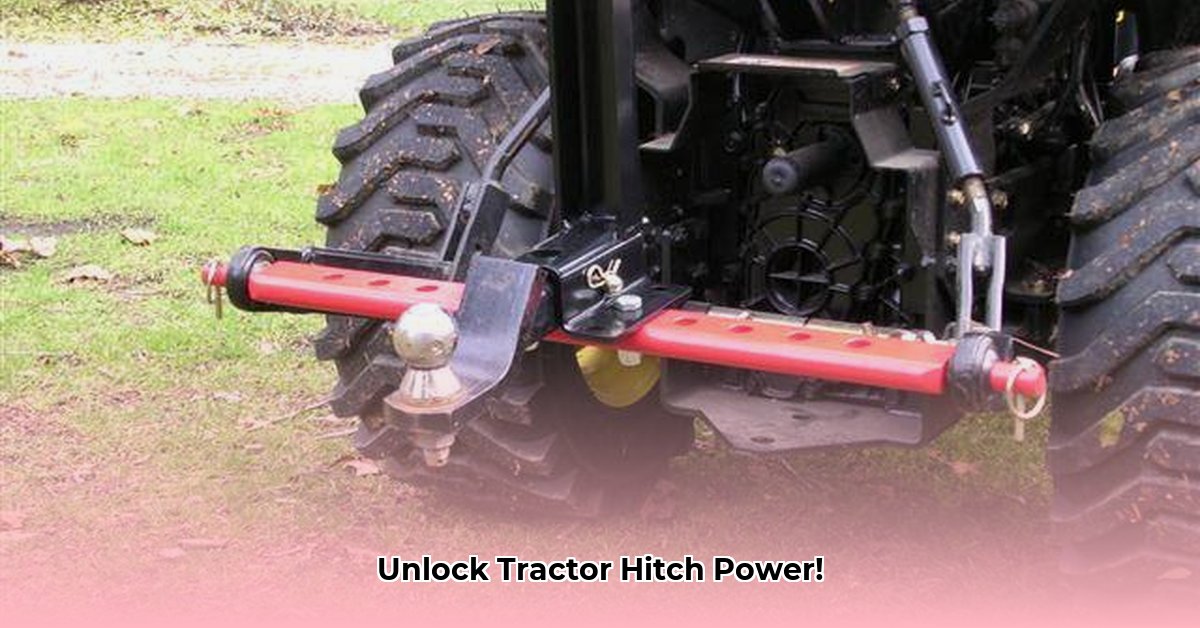
Drawbar Tractor Hitch: Your Guide to Optimized Tillage
Choosing the right drawbar hitch (the connecting point between your tractor and implements) is crucial for efficient and sustainable farming. The wrong hitch can lead to reduced fuel efficiency, increased soil compaction, and even equipment damage. This guide will help you select and use a drawbar hitch effectively. For a more detailed explanation of drawbar function, check out this helpful resource: Learn more about drawbars.
Understanding Your Hitch Options: More Than Just a Bar
Several types of drawbar hitches exist, each with its strengths and weaknesses:
Fixed-Length Hitch: Simple, inexpensive, and easy to use. However, its fixed length limits versatility. Ideal for standard tasks.
Swinging Hitch: Offers increased maneuverability, perfect for navigating obstacles and tight spaces. Requires more careful attention to avoid instability.
Adjustable-Length Hitch: Provides maximum versatility, allowing precise adjustment for optimal implement matching and various conditions. More complex and potentially more expensive.
A quick comparison:
| Drawbar Type | Pros | Cons | Best For... |
|---|---|---|---|
| Fixed Length | Simple, inexpensive, easy to use, reliable | Limited flexibility, may not suit all implements or conditions | Straightforward tillage, standard operations |
| Swinging | Increased maneuverability, good for tight spaces | Requires more attention, potentially less stable | Narrow fields, working around obstacles |
| Adjustable Length | Maximum versatility, optimal implement matching, fine-tuning | More complex, potentially more expensive, requires more skill | Precision farming, diverse implements and conditions |
Picking the Perfect Hitch: Matching Your Needs
Selecting the right drawbar involves considering several factors:
Analyze Your Operations: What's your primary tillage strategy? What implements do you frequently use?
Consider Soil Conditions: Heavy clay soils might benefit from shorter hitches to reduce compaction, while lighter soils might allow longer hitches for broader coverage. Isn't optimizing your tillage crucial for sustainable yields?
Review Your Tractor's Manual: Check for recommended hitch weights and types. Ignoring this advice could be costly – both literally and figuratively!
Select the Appropriate Hitch: Based on steps 1-3, choose a fixed, swinging or adjustable hitch.
Test and Refine: After installation, experiment in the field to optimize the length for your specific needs.
Safe and Smart Hitch Use: Keeping it Safe and Efficient
Safety is paramount. Always:
Inspect your hitch for damage before each use. A quick check could prevent a serious accident.
Use safety chains to prevent runaway implements.
Never exceed your tractor’s recommended hitch weight. Overloading can lead to catastrophic failure.
Employ smooth, controlled movements when hitching and operating equipment.
Regularly lubricate and maintain your hitch to extend its lifespan.
Real-World Success Stories: Lessons From the Field (and the Need for More Data!)
While scientific data on precise drawbar optimization is still limited, anecdotal evidence shows significant benefits from proper hitch selection, such as fuel savings and reduced soil compaction. Further research and farm-level data collection are needed to provide specific quantitative results. Dr. Anya Sharma, Agricultural Engineer at the University of Illinois, notes, "More rigorous field trials are needed to quantify the impact of drawbar length on various soil types and tillage implements". Isn't data-driven decision-making the cornerstone of modern farming?
Keep Learning: Where to Gather More Information
For more in-depth information, consult resources such as agricultural engineering departments at land-grant universities, equipment manufacturer websites (1), and peer-reviewed agricultural journals.